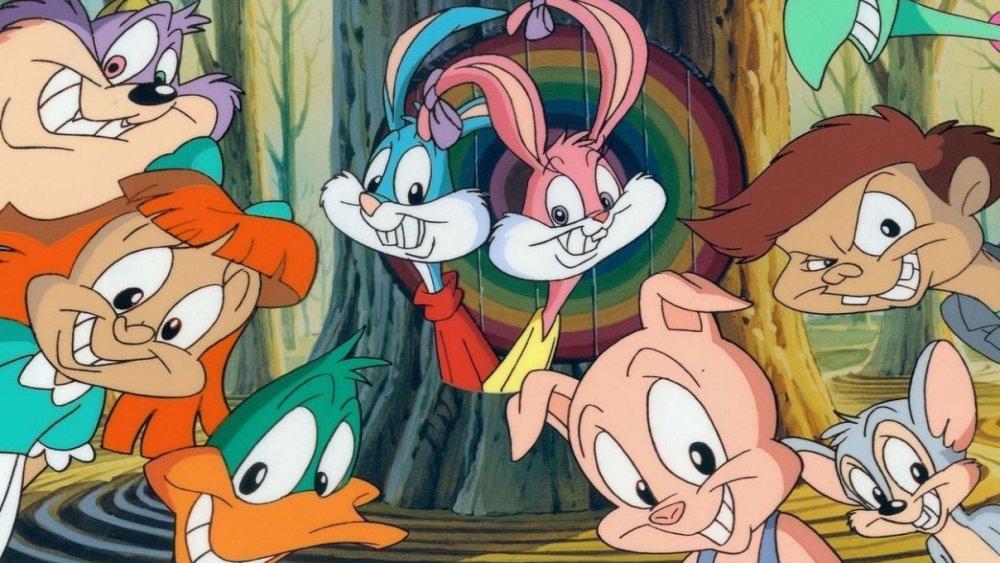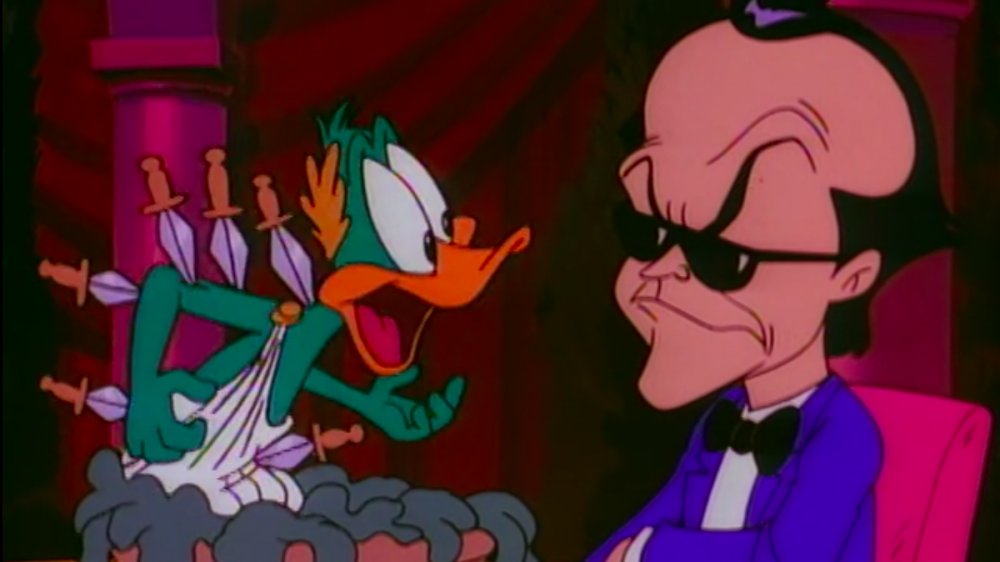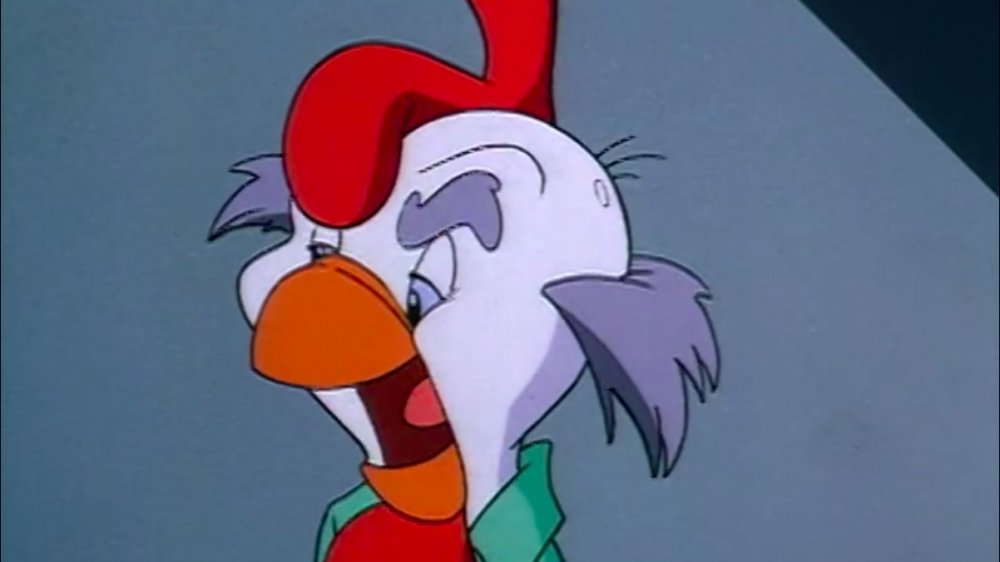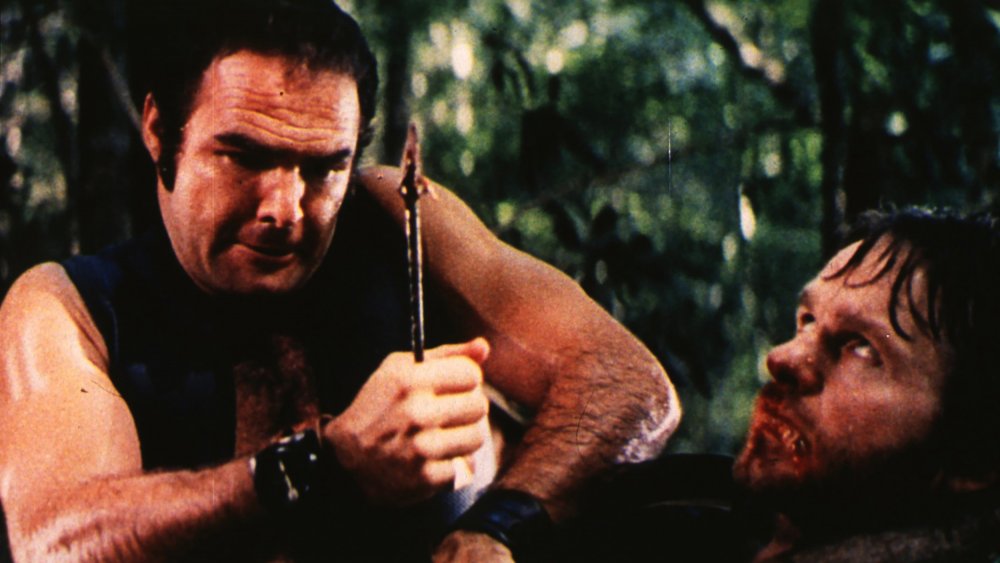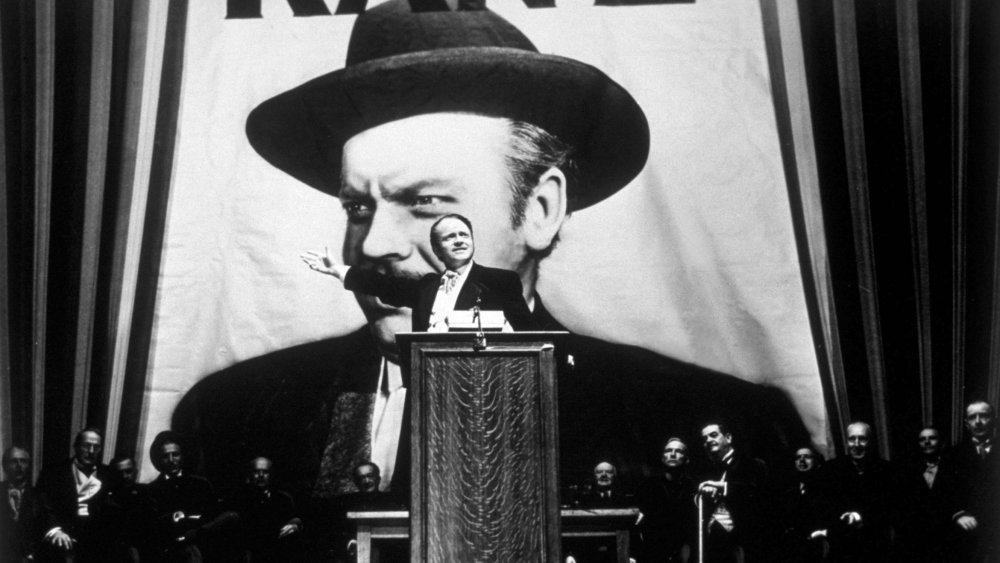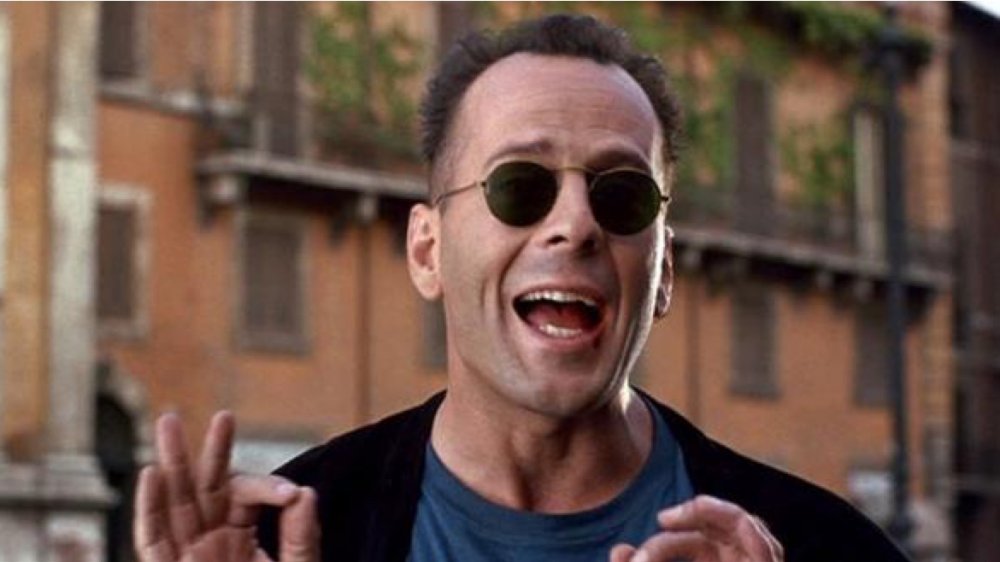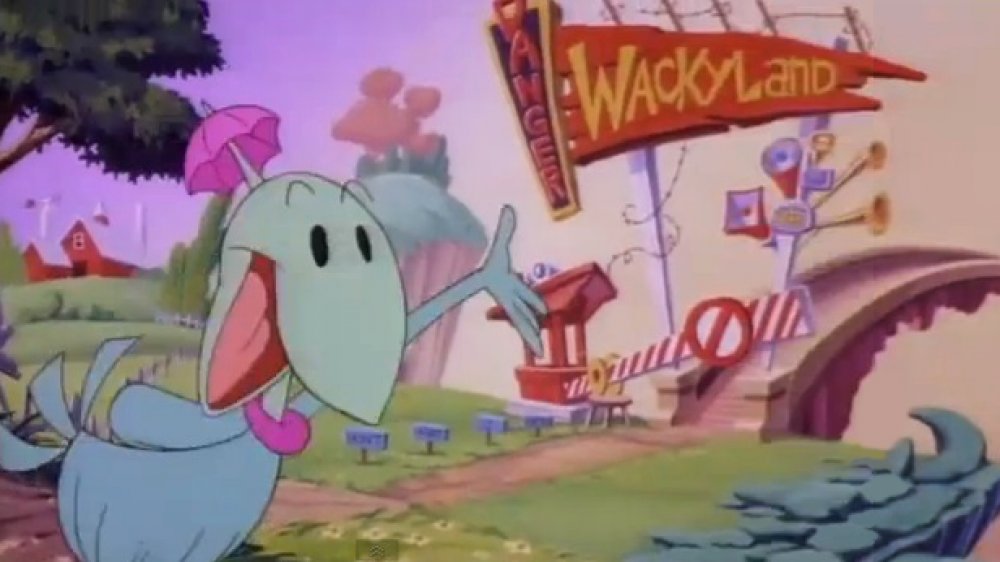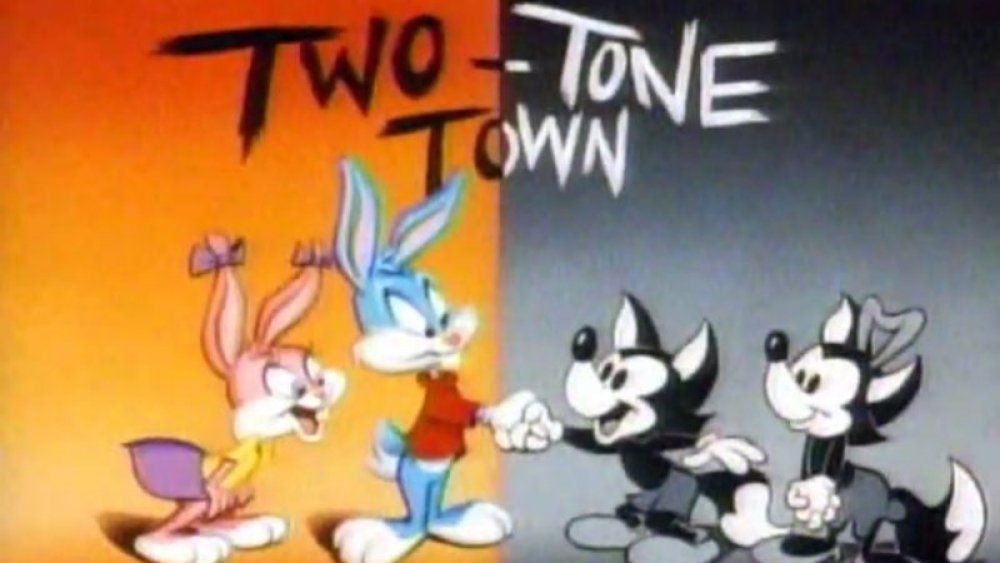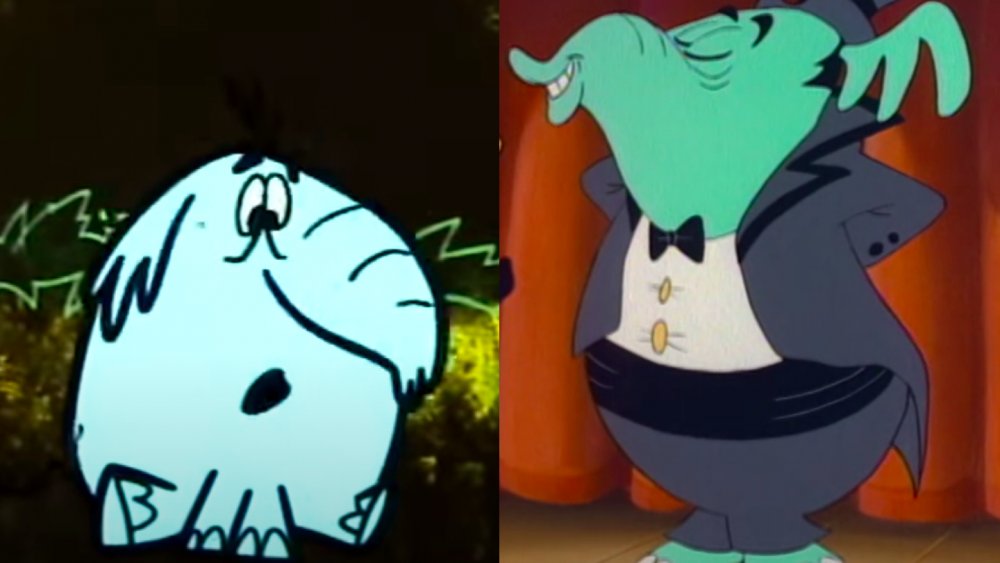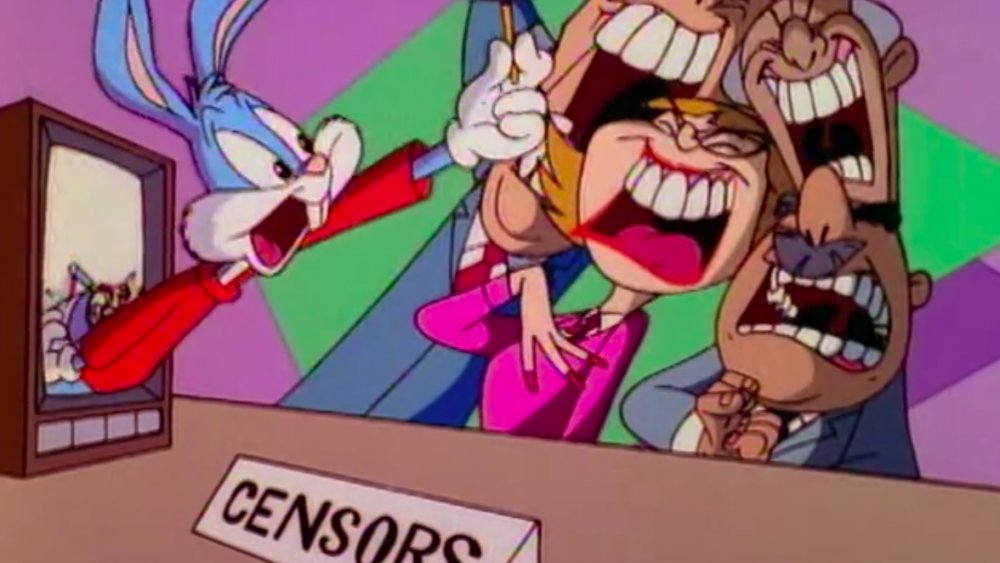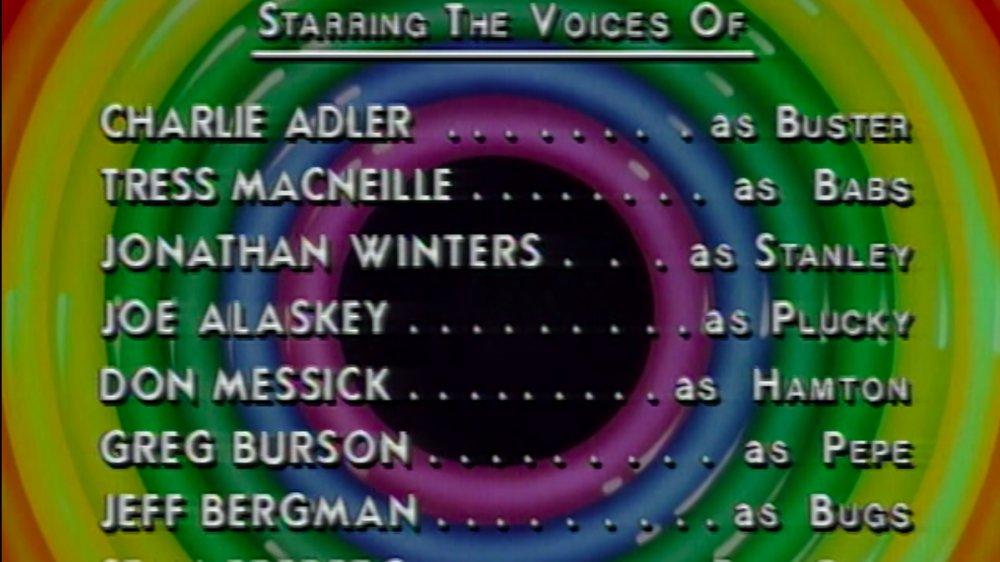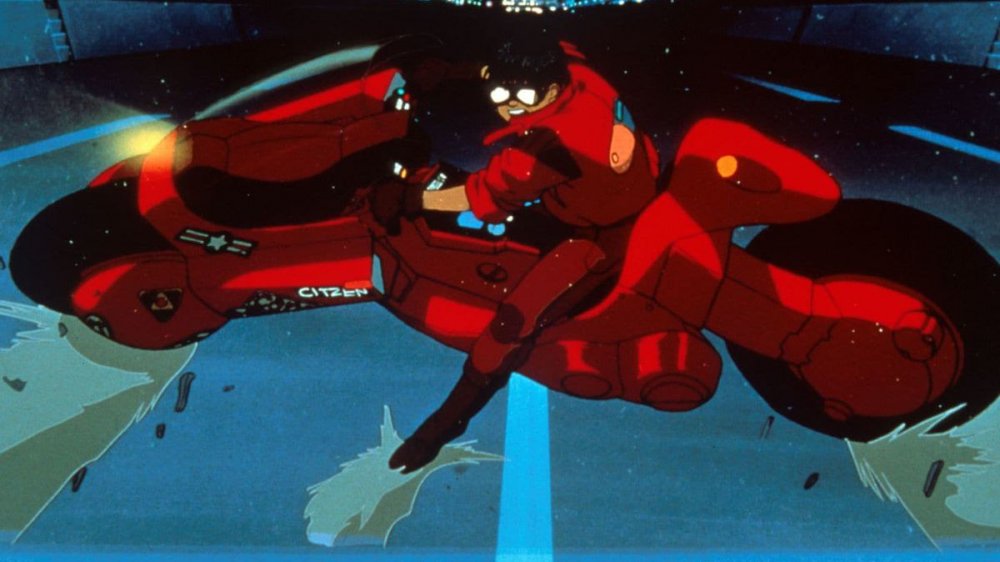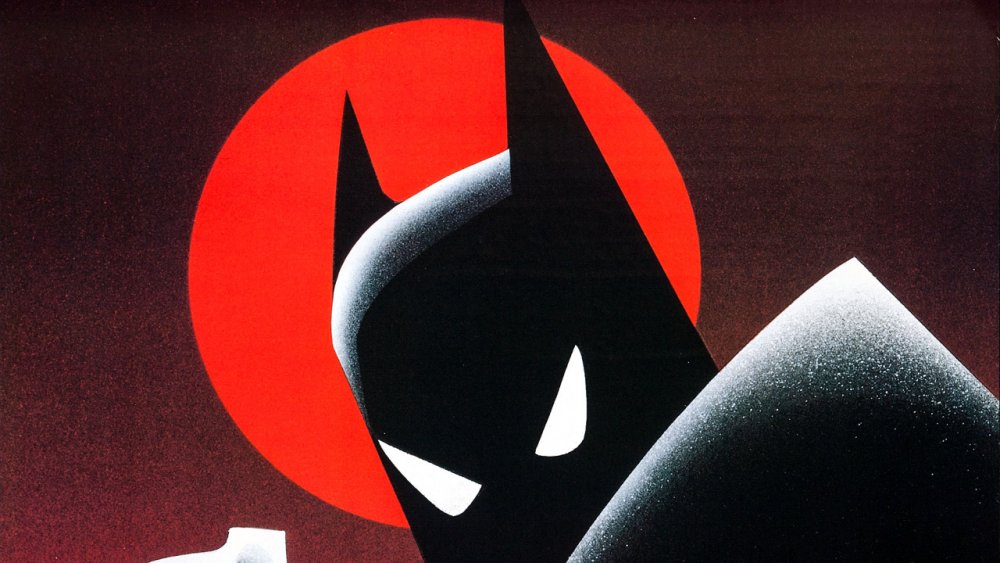Things Only Adults Notice In Tiny Toon Adventures
Tiny Toon Adventures marked the beginning of a new era for TV animation. Until then, most cartoons were strictly for kids, and most creators saw them strictly as a paycheck job. But the Tiny Toons crew understood that a lot of adults would be watching too (including parents, who didn't really have much choice) and included plenty to keep them entertained. And the writers seemed at least as concerned with entertaining themselves by seeing how many obscure references and inappropriate jokes they could smuggle in without getting fired.
In 1990, two years after bringing dozens of Golden Age cartoon characters back to the big screen when he produced Who Framed Roger Rabbit?, Steven Spielberg looked to do the same thing on TV. He picked up a film script cowritten by Tom Ruegger, expanded it into a series, and the result was Tiny Toon Adventures. Set at Acme Looniversity, it follows a new generation of cartoon stars under the mentorship of the original Looney Tunes cast. Some, like Bugs Bunny's students, Babs and Buster, were close to carbon copies. Others, like Elmer Fudd's student Elmyra Duff, who'd rather hug wabbits than hunt them, followed their teachers more loosely.
It's a simple framework, but Ruegger and company filled it with a dense and complicated sense of humor full of obscure and sometimes even private jokes. Half of it would fly right over kids' heads, and some would confuse most adults just as much, let alone 30 years down the line. With all that in mind, here's a look at all the things only adults notice in Tiny Toon Adventures.
It's full of celebrity cameos
The original Looney Tunes were loaded with topical jokes, celebrity caricatures, and inside-baseball film industry references. Tiny Toons took that tradition and ran with it. If anything, it took it even further, going hogwild with dozens of famous faces in nearly every episode as if they were trying to one-up each other in the sheer number of stars they could cram into each one.
Even a primary character, Shirley McLoon, was named after Shirley MacLaine, and a canine-ized Arnold Schwarzenegger also made frequent appearances. All kinds of stars appeared on the show — some are iconic, like Meryl Streep and Jack Nicholson and the other stars who appear in "Hollywood Plucky." Some are forgotten, like when Babs Bunny does a whole episode in the voice of Lifestyles of the Rich and Famous host Robin Leach, who most viewers will only know from being name-checked on Notorious B.I.G.'s "Juicy."
Some are so specific they'll baffle just about anybody trying to make sense of the show 30 years later. For instance, in the movie How I Spent My Summer Vacation, Fifi the skunk promises "It's not over until the fat lady sings!" before Roseanne Barr suddenly appears to belt out the National Anthem — which is all a lot less inexplicable when you know about her disastrous real-life performance of the song.
A stand-up pioneer appeared as himself
Sometimes, Tiny Toon Adventures even lured the stars to play themselves — even if mainly on the strength of terrible puns it's easy to imagine the writers only came up with because they seemed funny in the sleep-deprivation haze of a marathon pitching session. MTV host Downtown Julie Brown appeared as Julie Bruin, a reference we're sure just about no kid today can make heads or tails of. It also featured another star with a much more durable career in "Henny Youngman Day." This episode was made up of three stories framed by wraparound segments of a class by substitute teacher Henny Youngman as himself (represented, naturally, as a talking hen).
Youngman's a stand-up veteran who'd been performing since the 1940s, best remembered today for his cameo (again, as himself) in Goodfellas and his catchphrase, "Take my wife — please!" Why he agreed to appear in an episode all about how painfully unfunny he was — most of his students have fled the classroom by the end — is anybody's guess. Either way, he wasn't the only stand-up icon to appear, even if Tiny Toons had to lean on impressions by the voice cast for the rest of them. One segment has Babs at an open-mic comedy night with a Robin Williams soundalike named Red Rad Robin Killems, a bug based on Andrew "Dice" Clay (points off for not calling him the Liceman) whose entire set is bleeped out, and some others that even we couldn't decipher.
How I Spent My Summer Vacation took its plot from a very adult movie
For all their animation references, the Tiny Toons crew was just as prolific in stealing from live-action films. Kids wouldn't always recognize these parodies — in some cases, parents should be glad they couldn't. In the feature-length movie How I Spent My Summer Vacation, Babs and Buster's water gun fight escalates until Buster causes a flood that sweeps them downriver, and it takes all summer for them to paddle their way back home. Along the way, they meet a family of possums who should look familiar to fans of the New Hollywood movies of the '70s.
Deliverance, starring Burt Reynolds, Jon Voight, and Ned Beatty, is about a group of friends who, much like (if more willingly than) Babs and Buster go on a canoe trip through the Deep South. It quickly goes bad when Voight and Beatty are captured and assaulted by a couple of locals, and Reynolds murders one of them.
Obviously, Tiny Toons couldn't show all that, but it does follow the rafting plot and recreates Deliverance's most iconic scene, when one of the rafters plays "Dueling Banjos" with a strange boy. Buster strums his ears and tongue instead of a banjo, and the tune eventually morphs into the theme song, but the possum is an eerily accurate caricature of the actor from Deliverance.
The creators devoted a whole episode to inside jokes about Citizen Kane
The Tiny Toons crew plundered dozens of other classic movies for episode plots, like Sunset Boulevard ("Sepulveda Boulevard"), Field of Dreams ("Fields of Honey") and It's a Wonderful Life ("It's a Wonderful Tiny Toons Christmas Special"). With "Citizen Max," they go after what's widely considered the greatest of them all. Orson Welles' Citizen Kane follows a reporter as he tries to piece together the life of newspaper mogul and presidential candidate Charles Foster Kane (played by Welles) and the meaning of his mysterious last word, "Rosebud."
In "Citizen Max," Hamton Pig investigates local rich kid/Yosemite Sam equivalent Montana Max, his disastrous campaign for class president, and why he shouted "Acme!" (Since he's not dead in this version, the writers never quite manage to explain why Hamton didn't just ask him.)
The writers cram in every Kane reference they can think of, exactly recreating shots like Kane standing in front of a giant poster of his own face and the shadowy reporter who's only ever seen from behind. The parody provides a great framework for hilarious gags, like a recreation of the iconic opening shot of Kane's enormous mansion Xanadu, only to reveal that it's actually the guest cottage and Max's real house is even bigger. Who knows what kids at the time would have thought of all this — but if it inspired them to check out the original, that can only be a good thing.
Plucky Duck parodied a Bruce Willis flop
In "Two-Tone Town," while Babs and Buster are busy prepping a team of black-and-white cartoon stars for their big comeback (more on that in a minute), Plucky Duck is flogging his ginormous vanity project Hudson Duck. The movie opens with Plucky singing his own praises in front of a story-high statue of the title.
That isn't quite what happened in Bruce Willis' Hudson Hawk, but it sure must have seemed that way at the time. Based on a story by Willis himself that according to the New York Times, "he nurtured for 12 years," Hudson Hawk spent almost twice its projected budget as the crew flew around the world to film exotic locations for the globetrotting spy comedy and Willis allegedly tried to wrestle control of the film from Heathers director Michael Lehmann.
All that investment failed to pay off: Hudson Hawk lost gobs of money and was greeted by the kind of vicious reviews that would destroy most stars' careers. Tiny Toons was happy to enter the fray, not only exaggerating the ego behind the whole project but cementing the connection by dressing Plucky up in Hudson Hawk's trademark black overcoat and porkpie hat.
Every episode's full of references to classic Looney Tunes cartoons
As you'd expect for a Looney Tunes revival, Tiny Toon Adventures takes every opportunity to pay tribute to the originals. But the writers obviously did their homework, because they packed the series with callbacks that even the most faithful Saturday morning viewer couldn't catch — but they had so much fun with it that maybe "homework" is the wrong word.
The main cast included updated versions of the most popular characters like Bugs, Daffy, and Porky, of course. But some of them aren't so recognizable. Concord Condor was based on Beaky Buzzard, the sad sack bird who appeared in just four classic shorts and then disappeared for decades. Even Gogo the Dodo, who was important enough to appear in the theme song, and his Wackyland home, came from a one-off appearance in Porky in Wackyland.
But you really see how much the Tiny Toons creators loved their source material with the wall-to-wall deep-cut references they snuck in at every opportunity. The boxer who sparred with Bugs in Bunny Hugged was clobbered in a music video for They Might Be Giants' "Particle Man." The main cast spent a whole episode exploring a city of underground gremlins who all look like the one from Falling Hare. And "Who Bopped Bugs Bunny" includes a clapboard with the name "Tish Tash" — a pseudonym Looney Tunes director Frank Tashlin used before he even started working there!
Two episodes starred some characters even the Looney Tunes creators forgot about
"Fields of Honey" and "Two-Tone Town" both starred veteran cartoon "actors" from the '30s — and if you do a little digging, you'll see they really have been around that long. In "Fields of Honey," Babs can't find a mentor of her own (Buster apparently wasn't willing to share Bugs just then) until she discovers Honey, the original Looney Tunes star. Guided by a mysterious voice who turns out to be Honey's costar Bosko, Babs rediscovers Honey's cartoons.
Bosko and Honey really did appear in the first Looney Tunes cartoons. But despite their historical importance, these characters presented a serious problem for the animators. They existed in an uncomfortable middle ground between cute cartoon animal and grotesque blackface minstrelsy. The crew got around that ugly history by redesigning Bosko and Honey as species-less cartoon critters with black noses and floppy ears who ended up looking like the stars of their next project, Animaniacs.
In "Two-Tone Town," Babs and Buster rediscover some even more obscure black-and-white characters: Foxy, Roxy, Goopy Geer, and Big Bee, who had less than ten big-screen appearances between them. Despite what the episode says, though, Foxy and Roxy weren't just forgotten — looking just like Mickey and Minnie Mouse with pointier ears, they were allegedly dropped after a less-than-pleased Walt Disney called the studio. Goopy Geer was a little luckier, actually predating Goofy, but the Tiny Toons crew redesigned him anyway.
'Who Bopped Bugs Bunny' brought back an even more obscure character
The Tiny Toons crew's love of classic animation goes even beyond the original Looney Tunes. Sometimes they'd sneak in other in-jokes too. In this episode, Bugs takes the Acme Looniversity faculty and students to Paris to receive the Jerry Award — a reference to the French-beloved American star Jerry Lewis that also would have sailed right over the heads of Tiny Toons' nominal target audience. But instead, a rival cartoon star, an elephant named Sappy Stanley (played by another veteran comedian, Jonathan Winters), steals the "Schloscar" Bugs won in 1959, which Stanley believes is rightfully his. Babs and Buster investigate, and in another child-baffling reference, they do it as parodies of the '70s cop-show hero Columbo.
Bugs really did win an Oscar in 1959, and he really did go up against an elephant who looks suspiciously like Stanley. Sidney's Family Tree, starring Silly Sidney, was a 1958 short from Terrytoons Studios that competed with Knight Knight Bugs for the Academy Award for Best Animated Short. Since he belongs to another studio, Sidney couldn't actually appear on Tiny Toons, but his relationship to Stanley couldn't be closer, from his little wing-like ears to his light blue skin. And if he doesn't have a toothy mouth at the end of his trunk like Stanley does, Sidney's mouth, which is apparently somewhere in the middle of his chest, doesn't look any less weird.
Like the theme song says, they cracked up all the censors
In Seinfeld's famous "The Contest," Jerry puts on Tiny Toons because of its "very innocent, very wholesome quality." In reality, the Tiny Toons team tried to be as un-innocent and unwholesome as they could possibly get away with. Like all the classic movie references, it was less for the audience's entertainment and more their own — a game to see what they could get away with and keep their jobs. In "Animaniacs," the namesake of the crew's next project, Daffy Duck tries to distract himself from the students' films with a copy of Playduck. And in "Fields of Honey," when Babs asks Buster about Honey, he answers, "Winnie the Pooh has a 'problem' with it..." Apparently, the producers had no problem implying one of their biggest competitors was a drug addict.
Sometimes, the Tiny Toons crew went out of their way to antagonize Standards and Practices.When the higher-ups asked for a Very Special Episode, the writers responded with a story so offensive it's hardly ever been aired since. "Elephant Issues" mocked the whole idea, including a segment where Plucky, Buster, and Hamton split a bottle of beer and immediately become stereotypical alcoholics, steal a cop car, and finally kill themselves by driving it off a cliff. They appear in angelic robes before taking them off and checking with the kids to make sure they got the message. Then Plucky asks if they can do something funnier next time.
The creators hid loads of blink-and-you'll-miss-it gags in the credits
This one's something almost no kid would notice. After all, even if they did care who painted the backgrounds and played Bystander #9, who wants to put in the effort to read such tiny words as they go by so fast? Maybe the knowledge that nobody was watching emboldened the creators to have some real fun with the credits. Sometimes they used it for inside jokes, like crediting director Art Leonardi as "Man with Giant Hand" or saying "If you're just tuning in — You're late." Other times, they used it for a little self-deprecation, like "We gave Concord Condor a new haircut — And he still isn't funny" or "Disclaimer — The humor in today's show does not represent anything that was ever found in any way funny by anyone who ever lived." And sometimes, they even snuck in shots at their bosses: "Number of Retakes — Don't Ask" or "Moral of Story — We Need More Animators."
A legendary anime studio worked on several episodes
Even kids probably noticed that some episodes of Tiny Toons looked much better than others. If you keep reading through those credits, you'll see why. Warner Bros. farmed out the animation to several different outside studios — some good, some bad.
The best of them all was Tokyo Movie Shinsha, which animated several episodes, as well as the opening sequence and How I Spent My Summer Vacation — which is fitting, since it was one of the first attempts to import the Japanese tradition of OVA (original video animation) stateside. TMS have quite a pedigree on their side, with anime classics like Panda! Go Panda!, Detective Conan, and Lupin III, a series that included legendary animator Hayao Miyazaki's feature debut on The Castle of Cagliostro. They're also responsible for one of the greatest movies ever animated with their influential cyberpunk nightmare Akira.
TMS brought their trademark hyperrealistic animation of smoke, fire, and water to Tiny Toons along with some very unrealistic, but still very hyper, animation of the main characters. This wasn't their only stateside project either: they've contracted out on everything from Ducktales to Batman: The Animated Series.
The staff went on to create the DC Animated Universe
Tiny Toons turned launched the careers of many of animation's biggest movers and shakers. Designer Bruce Timm and writer Paul Dini went on to create Batman: The Animated Series, and that partnership continued through spinoffs like Batman Beyond and Justice League Unlimited, and even projects like Justice League Action as recently as 2017.
And they brought their old crewmates with them, including director Eric Radomski, producer Tom Ruegger, and casting director Andrea Romano, who continued casting the DC Universe Animated Original Movies well into the new millennium. Knowing that, all the Tiny Toons episodes with Plucky as Bat-Duck look less like parodies and more like auditions. They even featured a version of Robin called "Decoy, the Boy Hostage" — a joke that becomes a lot darker when you realize the same writers are behind Batman Beyond: Return of the Joker, in which Robin isn't just held hostage but tortured until he loses his mind.
As you might guess from that plot point, the creators continued applying the lessons they learned on Tiny Toons on Batman, which was even more adult. It took deep dives into characters' psychology, and it dealt with sex, and violence with a frankness that would have been unthinkable just a couple years earlier. Maybe they learned that lesson from one of the original Looney Tunes' creators, Chuck Jones, who said, "I never made cartoons for children. Nor did I make them for adults. I made them for me."
